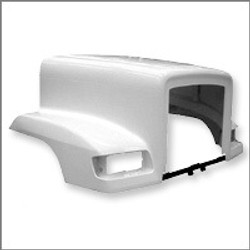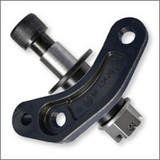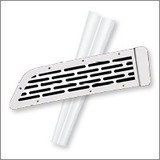The Freightliner FL70-FL80 Hoods & Related product lineup includes a wide range of components and accessories for the Freightliner FL70 and FL80 models. This product lineup features essential parts like hoods, grilles, trim, and related accessories that help maintain the exterior appearance and functionality of these trucks. Whether you need to replace a worn-out hood, upgrade the grille with a new design, or add some custom touches like hood emblems or accent pieces, this product lineup has you covered. With a variety of makes and models supported, including the Freightliner FL60, FL106, and FL50, you can find the right parts to keep your Freightliner looking and performing its best. Key features of this product lineup include high-quality construction, stylish designs, and easy installation to help you get your truck back on the road quickly.
Frequently Asked Questions About Freightliner FL70-FL80 Hoods & Related
What years and models are compatible with FL70 and FL80 hoods?
FL70 and FL80 hoods are generally interchangeable between model years 1996-2007, as Freightliner maintained consistent mounting points during this production run. However, there are minor differences in grille openings and headlight configurations between pre-2000 and post-2000 models. Always verify your specific VIN and model year when ordering, as some special configurations like extended hoods or severe service models may have unique requirements.
What's the difference between fiberglass and steel hoods, and which should I choose?
Steel hoods are more durable and resistant to cracking but weigh approximately 150-200 pounds more than fiberglass alternatives. Fiberglass hoods are lighter and more fuel-efficient but require careful handling during installation and are more prone to stress cracks around mounting points. For daily drivers and work trucks, steel provides better longevity. Fiberglass works well for show trucks or applications where weight reduction is critical.
What additional parts do I need for a complete hood installation?
Beyond the hood itself, you'll typically need hood hinges, hood springs or shocks, rubber bumpers, hood latches, and grille mounting hardware. Many customers overlook the hood-to-cowl seal, which is essential for preventing water intrusion. If converting from steel to fiberglass or vice versa, you may need different hood springs due to weight differences. Budget an additional $200-400 for these supporting components.
How difficult is hood installation, and what tools are required?
Hood installation requires two people and takes approximately 2-4 hours. Essential tools include a socket set, torque wrench, and hood prop rod or support stand. The most challenging aspects are aligning the hood gaps evenly (aim for 3/8" gaps on all sides) and adjusting the latches for proper closure. Many customers report difficulty with the hood-to-fender alignment, which requires patience and sometimes shimming the hinges.
Why are there different hood heights available, and how do I know which one I need?
FL70/FL80 hoods come in standard, mid-rise, and high-rise configurations to accommodate different engine sizes and cooling requirements. Measure from your fender mounting point to the highest point of your engine or air cleaner to determine minimum clearance needed. Standard hoods work for most ISB and 3126 engines, while mid-rise typically fits C7 and smaller ISL engines. High-rise hoods are necessary for larger ISL, ISX, and some Caterpillar C12 installations.

 Freightliner FL70-FL80 Bug Shields
Freightliner FL70-FL80 Bug Shields
 Freightliner FL70-FL80 Fender Extensions
Freightliner FL70-FL80 Fender Extensions
 Freightliner FL70-FL80 Front Fenders & Acc.
Freightliner FL70-FL80 Front Fenders & Acc.
 Freightliner FL70-FL80 Hood Replacement Parts
Freightliner FL70-FL80 Hood Replacement Parts
 Freightliner FL70-FL80 Hood Trim & Accents
Freightliner FL70-FL80 Hood Trim & Accents
 Freightliner FL70-FL80 Hoods
Freightliner FL70-FL80 Hoods
 Freightliner FL70-FL80 Winter Fronts & Bug Screens
Freightliner FL70-FL80 Winter Fronts & Bug Screens



